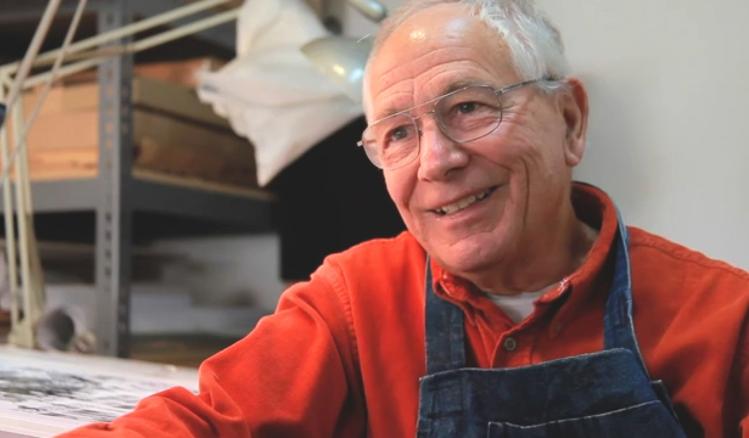
The Mexican-Swedish-American artist John August Swanson died in September in Los Angeles, his hometown, the city he loved. I have a special connection with him and his work. Swanson’s 2007 serigraph The Procession hangs above my ofrenda, a traditional Mexican home altar used for prayer. The serigraph was a gift from my mother-in-law, who purchased it after a visit to Los Angeles in 2019. At the time, the Cathedral of Our Lady of the Angels was hosting an exhibit of Swanson’s painting, and I was collaborating with him on a series of talks about the transformative power of art in faith and social justice. It was just months before the pandemic forced Los Angeles into its initial lockdowns.

Swanson told me he was inspired to paint The Procession after a profoundly spiritual experience at a procession at San Xavier del Bac Mission in Tucson, Arizona, on the Tohono O’odham Nation San Xavier Indian Reservation. Being among the native people and the large Mexican community of that region, he said, and witnessing their dancing, their joy, and their faith, had made an indelible impression. The Procession depicts a community streaming out of a cathedral, holding candles, singing, and playing tambours and other stringed and wind instruments. Some carry banners that, together with adjacent images on the cathedral’s facade, make up a mosaic of fifty-four smaller scenes from the Old and New Testaments, as well as images of the saints. The people are moving tightly together, with little space between them, evoking a unifying moment even as they seem to be an extension of the cathedral’s wide-open doors. There’s a starry sky overhead, as vivid as the rest of it all: The Procession is alive and joyful with eighty-nine individual vibrant colors.
I decided to hang The Procession instead of a crucifix above my ofrenda precisely because I find it so moving as a depiction of the body of Christ. And as the early months of 2020 unfolded, it offered the comfort and hope I needed. Holy Saturday of 2020 was an especially difficult time. We were several weeks into the pandemic lockdown and all liturgical celebrations were being streamed. For years I had accompanied adults in the RCIA process, which culminates with their baptism and full initiation into the Church at the Easter Vigil. This year would be different. There would be no gathering of the faith community, no procession of people with candlelight, and no gathering around the waters of baptism. Instead, we would gather virtually, and initiations would be put on hold. My state of mourning was distracting me from the joy of resurrection. So I focused on The Procession, there above the ofrenda, and I felt myself invited to contemplate the mystical presence of the faith community I was missing. For a moment I felt their closeness.
As the months passed, The Procession continued to help me think about the many ways in which God’s children gather. Through the Black Lives Matter protests following the murder of George Floyd, it kept me grounded and in solidarity with the blessed who seek justice. And as deaths from the pandemic continued to rise, The Procession invited me to be present to the pain of families mourning loss, and to remember that though they may be distant and unfamiliar to me, they are also a part of me. The Procession called me to seek comfort in the stories of faith depicted in its banners and on the walls of its cathedral. And still, each morning, it reminds me that we walk together, that we share our suffering and our happiness, that we are truly one though many.
Swanson’s work gives us a glimpse into the multicolored joy through which God gazes at creation. And those who knew him knew what it was like to be seen through the eyes of someone who understood that joy. Swanson would always refer to The Procession as his life’s great work. The original acrylic painting was completed in 1982 (and is part of the Vatican Museums’ Collection of Modern Religious Art); the images depicted within the smaller fifty-four images in The Procession themselves became larger paintings he completed in the years that followed. Swanson revisited The Procession in 2007 and completed this second version as a hand-printed serigraph.
One of the people among the crowd in The Procession stands out: in the lower right-hand corner there is an older man amid the people, his arms raised. He is the only person facing in a different direction, looking behind him as if in awe at the crowd processing from the cathedral. It is, of course, John August Swanson himself. This is the way he lived his life, in awe of God’s creation, in awe of all people. Through his art he invited us to contemplate the world with arms raised in praise and in awe of its sacredness. May he continue to do so.

